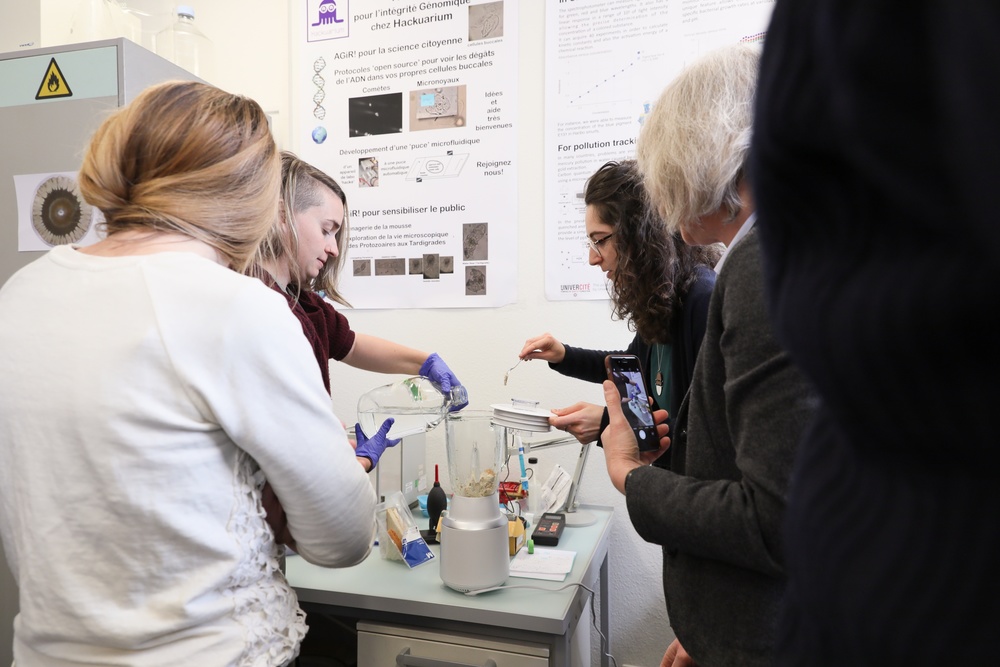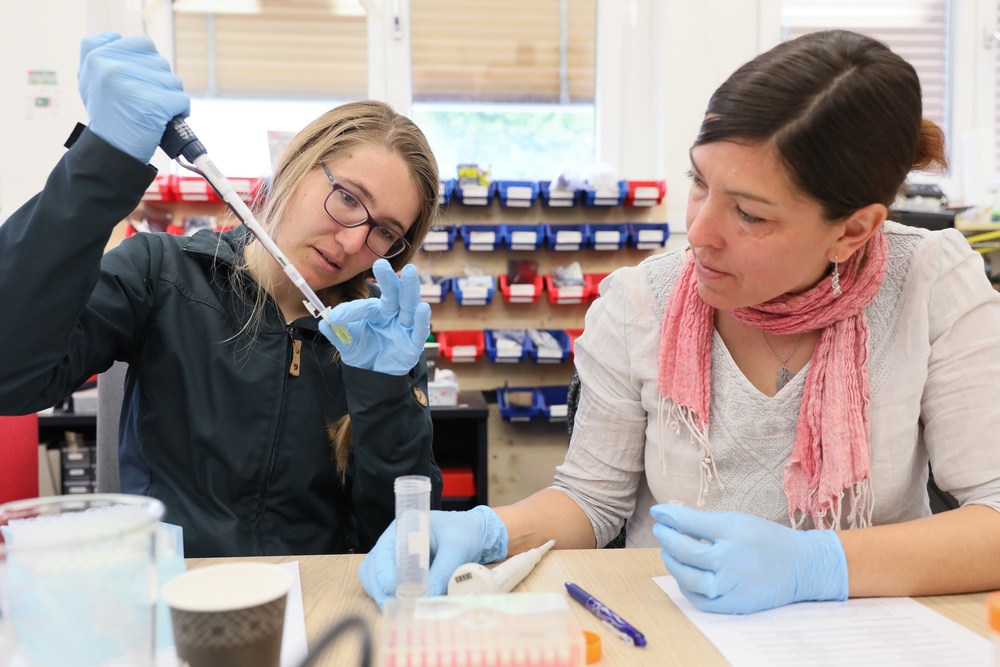Blog
The first food DNA workshop
The first food DNA workshop was a success
Thanks to our dedicated team of participants who went through all the steps of the protocol with rigour and good humour, we obtained DNA from complex food samples!
A first in a community setting, this was a proof-of-concept: it is possible to obtain DNA from food using relatively simple and affordable equipment and protocols.

© Alain Herzog / 2019 EPFL

© Alain Herzog / 2019 EPFL
We sequenced: pesto, minced meat, fish fingers, paprika chips, onion sprouts, chicken salad, ground almonds, a mix of grains, yoghurt, falafels, horseradish cream cheese and a tuna sandwich.
8 of the 12 samples provided considerable amounts of data. You can download the data here https://we.tl/t-TwI6Tq7Lke (link valid until 3rd of June 2019 at 4pm)
This is an example of one of the sequences:
CTAGCATCGCCCTTTGTAACGATCAAGACTGG TAAGTCCATCGGTCCCATACAGTTGTCCGTAAT GCCAGTAGAAGATTCGGCGCTACCGCGGCCC TGCTTCTTCAGGTGGAACTCCAGGTTGAGTTAC TCAGAATGCTGCCAATATATCCAATGCCAGCAG TTTGGTACTCAAGAGTATAATAAGTCAATTTGCT CTTTAACACCAGCTTTGAAATCCAACACTCGCT TTAGTCTCTGTTTGGTGACATAC
Which of the following food samples do you think this sequence came from - paprika chips, cream cheese or tuna sandwich?
Tip: you can copy-paste it in to https://blast.ncbi.nlm.nih.gov/Blast.cgi?PROGRAM=blastn&PAGE_TYPE=BlastSearch&LINK_LOC=blasthome
Answer below.
The next steps are: to find a reliable way to analyse the thousands of sequences this produces, to see if we can clearly identify ingredients and if all foods present show up in the data, as well as figure out why some samples (marked with x) failed. Maybe the blender wasn’t strong enough, or the additives in the food inhibited the chemical reactions…
If you have any ideas, do get in touch via [email protected] !
You can check out photographs from the event as well as the protocol here: www.foodrepo.org/dna. If you try out the protocols, let us know - we’d love to hear feedback and/or collaborate.
Read the news article published on EPFL homepage: https://actu.epfl.ch/news/enabling-consumers-to-analyze-their-food-s-dna/
Answer: it is capsicum, from the paprika chips https://en.wikipedia.org/wiki/Capsicum_annuum